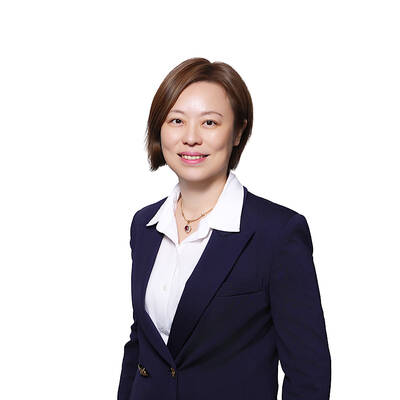Electronics component maker Lite-On Technology Corp (光寶科技) yesterday said that it plans to boost its new medical equipment business revenue to NT$10 billion (US$33.2 million) a year over the next five or six years.
“As the information technology industry around the world becomes increasingly competitive, we have decided to utilize our expertise in electronics and enter a field with a higher entry barrier,” division chief executive Danny Liao (廖學福) told reporters yesterday.
The division yesterday launched the first medical device developed in Taiwan for testing human health conditions, and it expects shipments of the device would reach 1,200 units this year, said Audrey Lin (林玉娟), assistant vice president of the company’s medical and biotechnology business unit.
The division’s new product — Skyla HB1 — which can provide results within 15 minutes for blood tests examining the function of the liver, kidney and the pancreas, as well as cardiovascular function, received approval in Europe in November 2012 and is sold in Taiwan, Europe, the Middle East and across Southeast Asia, Lin said.
Lin said the product is expected to pass the inspection of the US Food and Drug Administration (FDA) in the second quarter next year and receive approval in China to enter its market in the second half of next year.
As for the company’s medical devices for examining pets’ health, which were launched in July last year, Lin expects its shipments to rise to 600 units this year, up from 200 units a year ago.
The device for pets is currently sold in Taiwan, Europe, across Southeast Asia and China, Lin said.
Both the medical devices for humans and for pets are priced at between US$10,000 and US$15,000 each, Lin said, adding that gross margin for both devices is about 60 percent, higher than 12.14 percent posted by Lite-On in the first quarter.
Although the division spent NT$300 million a year on research and development, because of rising sales of the two devices, the division is to swing to the black in the fourth quarter this year and remain profitable throughout next year, when its products enter more markets, Lin said.
The division was set up in 2011, and half of its personnel came from the Industrial Technology Research Institute (ITRI), with another half from Lite-On.
The division purchased the technology for its medical devices from the institute, and it sells these medical devices under its own brand “Skyla,” it said.
Liao and Lin made the statements at a press conference after Lite-On donated 18 medical devices and their supplies to six counties yesterday.

Quanta Computer Inc (廣達) chairman Barry Lam (林百里) is expected to share his views about the artificial intelligence (AI) industry’s prospects during his speech at the company’s 37th anniversary ceremony, as AI servers have become a new growth engine for the equipment manufacturing service provider. Lam’s speech is much anticipated, as Quanta has risen as one of the world’s major AI server suppliers. The company reported a 30 percent year-on-year growth in consolidated revenue to NT$1.41 trillion (US$43.35 billion) last year, thanks to fast-growing demand for servers, especially those with AI capabilities. The company told investors in November last year that

United Microelectronics Corp (UMC, 聯電) forecast that its wafer shipments this quarter would grow up to 7 percent sequentially and the factory utilization rate would rise to 75 percent, indicating that customers did not alter their ordering behavior due to the US President Donald Trump’s capricious US tariff policies. However, the uncertainty about US tariffs has weighed on the chipmaker’s business visibility for the second half of this year, UMC chief financial officer Liu Chi-tung (劉啟東) said at an online earnings conference yesterday. “Although the escalating trade tensions and global tariff policies have increased uncertainty in the semiconductor industry, we have not

Intel Corp has named Tasha Chuang (莊蓓瑜) to lead Intel Taiwan in a bid to reinforce relations between the company and its Taiwanese partners. The appointment of Chuang as general manager for Intel Taiwan takes effect on Thursday, the firm said in a statement yesterday. Chuang is to lead her team in Taiwan to pursue product development and sales growth in an effort to reinforce the company’s ties with its partners and clients, Intel said. Chuang was previously in charge of managing Intel’s ties with leading Taiwanese PC brand Asustek Computer Inc (華碩), which included helping Asustek strengthen its global businesses, the company

Power supply and electronic components maker Delta Electronics Inc (台達電) yesterday said it plans to ship its new 1 megawatt charging systems for electric trucks and buses in the first half of next year at the earliest. The new charging piles, which deliver up to 1 megawatt of charging power, are designed for heavy-duty electric vehicles, and support a maximum current of 1,500 amperes and output of 1,250 volts, Delta said in a news release. “If everything goes smoothly, we could begin shipping those new charging systems as early as in the first half of next year,” a company official said. The new